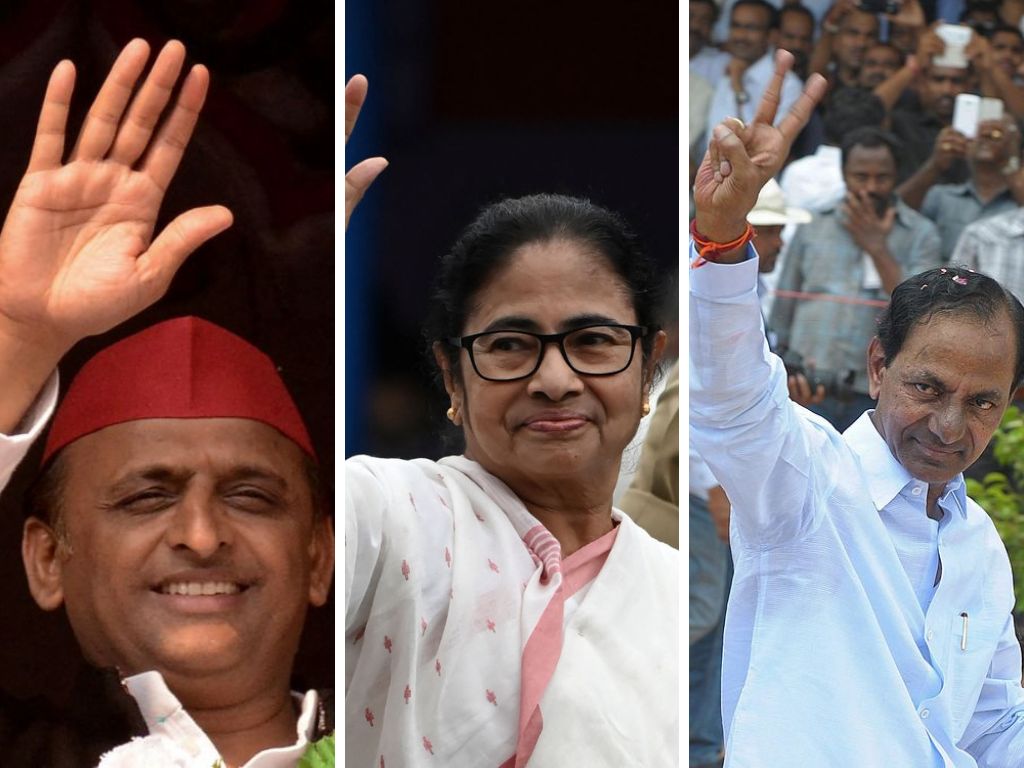- Thursday, April 25, 2024

By: Shubham Ghosh
The term ‘third front’ gains traction whenever a national election is around the corner in India and it is no exception in the run-up to the 2024 general polls.
By ‘third front’, it is generally meant that the countries’ political parties, which do not want to form an alliance with either the ruling Bharatiya Janata Party (BJP) of prime minister Narendra Modi or the Indian National Congress, the other big party which is currently undergoing a rough phase, and join each other’s hands instead to try to give an alternative political platform to the voters.
However, the idea of ‘third front’ has not taken off much in India’s electoral politics because without either of the two major parties, it is next to impossible for the smaller regional parties, even if some of them are theoretically national ones, to gain much command to form a national government. There have been instances in India’s electoral history where smaller parties got the prime minister but they were so much dependent on the big players that it was only a matter of time before they collapsed.
It is not that the BJP or the Congress have always formed majority governments of their own in national elections and have depended on smaller ‘kingmakers’ to see them survive. But yet, they have managed to remain in office for the entire tenure, like for example the governments of PV Narasimha Rao, Atal Behari Vajpayee and Manmohan Singh.
The idea of ‘third front’ also has more challenges this time around since the ruling BJP looks very strong at the moment to come to power for the third successive time. The saffron party rules 15 out of India’s 29 states, thanks to Modi’s appeal in mobilising votes and for an opposition that is too splintered and disunited, it is indeed a herculean task to find a base strong enough to challenge Modi and sway the votes away from his party.
“The notion of such a bloc is not new. Before every election in the lower house of parliament since the turn of the millennium, regional politicians have attempted to come together to present voters with an alternative,” wrote Neeta Lal in Nikkei Asia.
This time, the initiative to form the ‘third front’ was taken by Samajwadi Party chief Akhilesh Yadav who recently approached Mamata Banerjee, the chief minister of the eastern state of West Bengal and the supremo of the Trinamool Congress, to discuss an electoral strategy to take the BJP head on in next year’s big battle.
Banerjee later met her Odisha counterpart Naveen Patnaik who leads the Biju Janata Dal. The latter is set to visit Delhi this week where he is likely to hold talks with other regional parties about bringing them under one umbrella.
Another vocal supporter of the front is K Chandrasekhar Rao, chief minister of the southern state of Telangana. His Telangana Rashtra Samithi party’s name was changed to Bharat Rashtra Samithi in order to make an all-India appeal. The leader of India’s youngest state is of the opinion that both the BJP and Congress have failed to govern the country and is one who is capable of doing it better than both.
He had also tried to create a similar front before the 2019 general election but it did not succeed as many regional leaders decided not to be its part.
If geographical limitation is one that pegs the ‘third front’ back, the lack of cohesion is another major obstacle. The regional leaders have their own ambitions to pursue and choosing a consensus prime ministerial face for the front becomes a task next to impossible.
“The third front has remained a fractious group because each of their leaders also harbors ambitions to become prime minister,” Rajesh Bijnori, a leader of the Samajwadi Party, was quoted as saying by Nikkei Asia.
Exclusion of the Congress also doesn’t work in favour of the ‘third front’. While many of the regional parties feel that they are now stronger than the grand-old party which has only slumped in Indian politics, the fact that it still remains a national force cannot be ignored. This year, the disqualification of top Congress leader Rahul Gandhi as a parliamentarian has hurt the Congress even more and though the regional parties have shown some solidarity for him and the party, it is to be seen whether it can really transform into a sustainable anti-Modi platform.
The Congress is also suspicious of the ‘third front’ as it feels that it would only help the BJP electorally. It feels nothing short of a united opposition can really defeat Modi’s BJP and a ‘third front’ will only spoil the opposition’s chances.
![]()